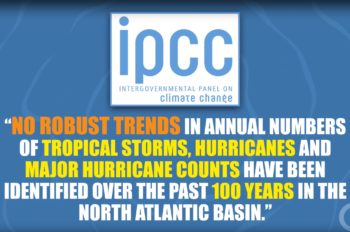 Studies of the world’s tropical forests have pinpointed how much water plants put back into the atmosphere compared to how much carbon they take up, with lower rainfall linked to increased efficiency.
Studies of the world’s tropical forests have pinpointed how much water plants put back into the atmosphere compared to how much carbon they take up, with lower rainfall linked to increased efficiency.
By studying how efficiently plants use water, researchers from Swinburne and the University of California have determined how well forests are acclimating to rising levels of carbon dioxide in the atmosphere.
The researchers conclude that some drier conifer forests are acclimating two to three times faster to rising carbon dioxide than wetter, conifer forests, meaning they are more efficient in their water use.
The results of this research have been published in the journal Nature Communications.
The findings help explain why rainfall in the Amazon is unevenly distributed, and why some regions are drying out at a faster pace.
This new research provides empirical evidence that could be used to refine models of predicting current and long-term rainfall and improve the reliability of predictions.
It also has implications for how water is stored and used in areas where it is known that plants put less water back into the atmosphere.
Novel patterns emerge
Lead researcher, Swinburne Professor of BioScience and Innovation, Mark Adams, says this study is particularly strong because it draws on data from multiple sources across the world.
“Our findings are not reliant on any one study or research group. Our small research team worked for several years to compile and explore the data. A unique feature of the final analysis was the focus on the rate of change.”
“Many previous studies have observed that water use efficiency rises with atmospheric carbon dioxide. What hasn’t been clear is the rate of change. Once we focused on that, novel patterns emerged,” he says.
Those patterns are backed by other recent US research showing that drier conifer forests are also acclimating to rising carbon dioxide better than wetter conifer forests.
What it means for Australia
The research is hugely significant for the world’s large expanses of tropical forests, but also has implications for Australia.
The study showed that on average over the last century, leguminous trees—or trees that produce seeds in pods—used water more efficiently than non-legumes. Much of inland tropical and sub-tropical Australia is dominated by acacias, which are leguminous.
“While Australia lacks anything resembling an Amazon basin, it does have vast expanses of legume-dominated vegetation. We lack a serious understanding of the implications of this for our hydro-climates,” says Professor Adams.
“If those Acacia woodlands are transpiring less water as a result of the rise in atmospheric carbon dioxide, then we have a serious job ahead to understand potential consequences for run-off and infiltration to replenish groundwater, as well as impacts on rainfall.”
Read more at Phys.org

















Back in the 1970’s it was Global Cooling and New Ice Age Liberal rags like TIME and NEWSWEEK was going on about Global Cooling and a New Ice Age was coming tjat liberal rag TIME was spreading this false news about Global Warming back in the 1990’s and their BE AFARAID BE VERY VERY AFRAID this liberal rag needs to by Boycotted because it even produces a issue for kids TIME FOR KIDS just to get them to subcribe to their leftists rag
New research? I don’t think so. Just read The Global Warming Debate (1996) thre report of the European Science and Environment Forum.
I guess the point of the study was increasing levels of carbon dioxide make plants more efficient resulting in them giving off less water. Giving off less water means less rain so we should reduce CO2 emissions. Many decades ago when I was a teenager I watched a documentary on plants relationship to rain fall. A geographical area once had abundant rain fall. A major source of the moisture was the jungle. After man had cut down most of the jungle the area then became much drier. Before concluding that carbon dioxide emissions should be reduced, we need to take into account all factors that reduce moisture release, including deforestation. Another consideration should be along with the greening of the earth, we have more plants to release moisture.
The bizarre notion that humans can direct the climate is laughable .
Isn’t the sales pitch cut back Co2 and humans can dictate the earths temperature within a couple of degrees ? Think of the absurdity of that .
These promoters pitch that the trace gas which in greater abundance helps plant growth should actually be reduced , held steady then never change … well of course unless nature does it .
Isn’t the question why do the advocates to reduce Co2, which represents a whopping fraction of 1 % , want to reduce plant and tree growth ?
Do they deny that a reduction in Co2 has the effect of reducing the greening of the earth ? What are they hoping to achieve by reducing plant and tree growth ? You would think that newspapers who massacre millions of trees per year would like to see tree growth encouraged .
Maybe they just have an immense sense of guilt so they pump the tires ” earth has a fever” as deflection .
It doesn’t really matter the motive they are laying the ground work for going down . A good fraud usually needs a lot of help to pull off . Most of the MSM have played their part . Thank goodness we only have less than 12 years to save thew planet .
So much for this Fragile Earth nonsense as well as this Delicate Balance of Nature,Nature Bats Last and were destroying the Earth load of malarkey